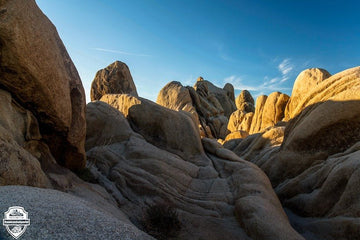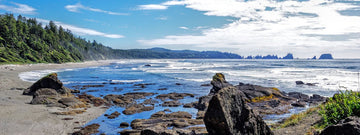Hiking 101
Hiking is a wonderful way to explore nature, get some exercise, and enjoy the great outdoors. For beginners, understanding how to use the natural resources around you can enhance your hiking experience and ensure you’re well-prepared. Here’s a guide on how to make the most of your surroundings, with a special focus on what to pack in your hiking backpack and what to watch out for while hiking.

Packing Your Hiking Backpack
Before diving into the natural resources, let’s talk about your hiking backpack. A well-packed hiking backpack is crucial for a successful hike. Here are some essentials to include:
- Navigation Tools: A map, compass, or GPS device to help you stay on track.
- Hydration: Plenty of water and a water filtration system or purification tablets.
- Food: High-energy snacks like trail mix, energy bars, and dried fruit.
- Clothing: Weather-appropriate clothing, including layers, a rain jacket, and sturdy hiking boots.
- First Aid Kit: Basic medical supplies for emergencies.
- Lighting: A headlamp or flashlight with extra batteries.
- Fire Starting Tools: Matches, a lighter, or a fire starter kit.
- Multi-tool or Knife: Useful for various tasks and emergencies.
- Emergency Shelter: A lightweight tarp or emergency blanket.
Utilizing Natural Resources
Once you’ve packed your hiking backpack, it’s time to make the most of the natural resources around you. Here are some key areas to focus on:
- Finding Water
Water is essential for staying hydrated during your hike. While you should always carry some with you, knowing how to find and purify water in the wild is crucial.
- Natural Sources: Look for streams, rivers, and lakes. Avoid stagnant water, which can be contaminated.
- Purification: Use a portable water filter, purification tablets, or boil the water to make it safe for drinking.
- Building a Shelter
If you find yourself in need of shelter, natural materials can be very useful.
- Location: Choose a flat, dry area away from potential hazards like falling branches or flooding.
- Materials: Use branches, leaves, and other natural materials to create a lean-to or debris hut. A tarp from your hiking backpack can also be used in combination with natural materials for added protection.
- Starting a Fire
Fire provides warmth, a way to cook food, and a means to signal for help.
- Gathering Materials: Collect dry tinder (like leaves, grass, or bark), kindling (small sticks), and larger fuel wood.
- Fire Starting Methods: Use matches, a lighter, or a fire starter from your hiking backpack. If you’re without these tools, you can use natural methods like a bow drill or flint and steel.
- Foraging for Food
While you should bring enough food in your hiking backpack, knowing how to forage can supplement your supplies.
- Edible Plants: Learn to identify edible plants, berries, and nuts in your area. Always be sure of what you’re eating to avoid poisonous plants.
- Fishing: If you’re near a water source, fishing can provide a fresh meal. Pack a small fishing kit in your hiking backpack or improvise with natural materials.
- Navigating the Wilderness
Understanding how to navigate using natural resources can prevent you from getting lost.
- Sun and Stars: Use the position of the sun during the day and the stars at night to find your direction.
- Landmarks: Identify and remember natural landmarks like mountains, rivers, and unique trees to help orient yourself.
What to Watch Out For While Hiking
Hiking can be a safe and enjoyable activity if you take the necessary precautions. Here are some things to watch out for:
- Weather Conditions: Always check the weather forecast before heading out and be prepared for sudden changes.
- Wildlife: Be aware of the local wildlife and know how to react if you encounter animals like bears, snakes, or insects.
- Trail Conditions: Stick to marked trails and be cautious of loose rocks, slippery surfaces, and steep inclines.
- Physical Limits: Know your physical limits and don’t push yourself too hard. Take breaks as needed and stay hydrated.
- Emergency Situations: Have a plan in case of emergencies. Know the location of the nearest help and carry a whistle or signaling device.











